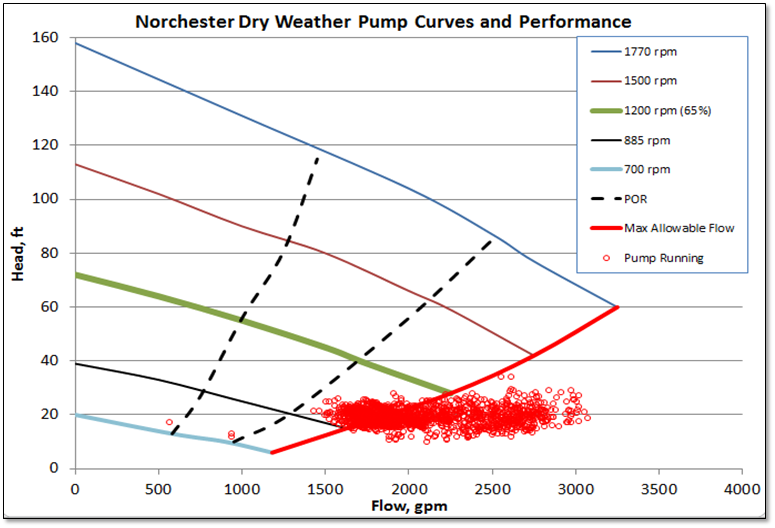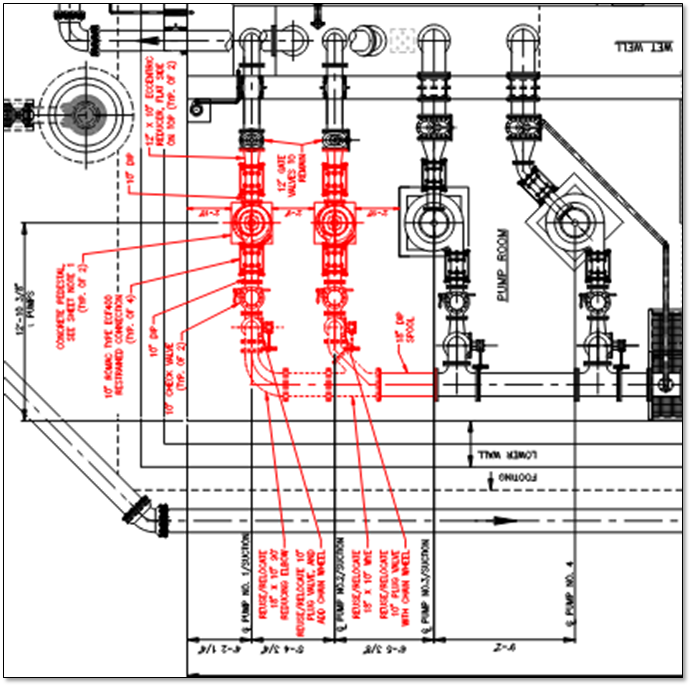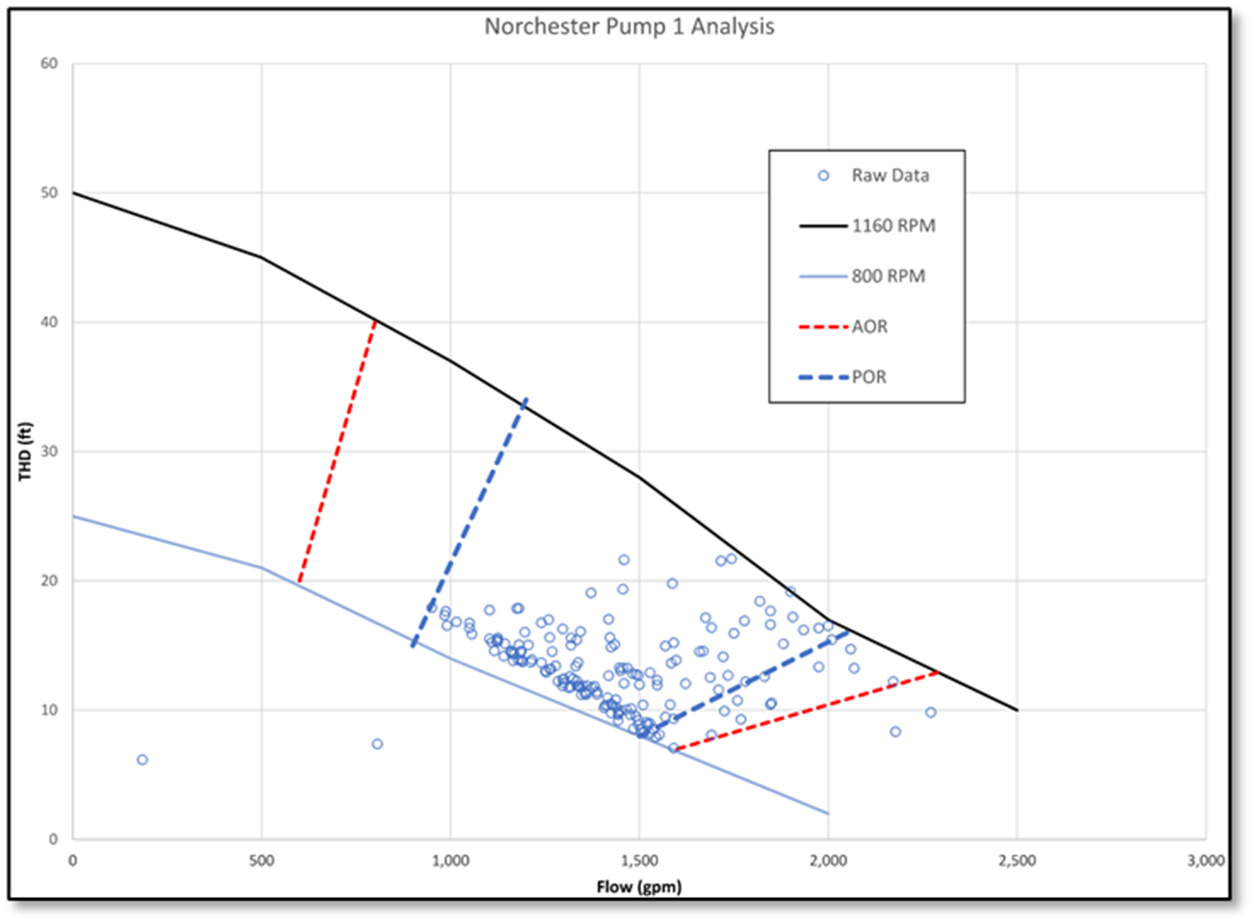Minimizing Maintenance Costs by Right-Sizing Dry Weather Pumps
Overview: The Norchester Pump Station was rebuilt in 2016 with dedicated dry weather and wet weather pumps. Between 2016 and 2018, the dry weather pumps required more than 5,000 hours of labor and $20,000 in parts for corrective maintenance due to pump ragging and pump failures. These pumps were replaced with smaller, properly sized pumps in late 2018 and have operated without significant issues since saving time and labor and increasing the reliability of the station.
Category: Case Studies, Blogs, PSM Newsletter June 18, 2024
Intended Audience: Water/Wastewater, Intermediate
Objective: Minimize maintenance costs and increase the reliability of a wastewater pumping station.
Description of System: The Norchester Pump Station is a wastewater pump station with flows and pressures ranging from 500 to 3,000 gpm and 5 to 50 psi, respectively. This station was rebuilt in 2016 as a self-cleaning trench-style station with dedicated 75-hp dry weather pumps and 125-hp wet weather pumps. Between 2016 and 2018, the dry weather pumps required more than 5,000 hours of labor ($225,000) and $20,000 in parts for corrective maintenance due to pump ragging and pump failures. The layout of the pump station is shown in Figure 1.

Figure 1: Layout of Rebuilt Norchester Pump Station
Description of Intervention: Engineering analysis revealed that the pumps were significantly over-sized and almost never operated within their preferred operating range (POR) and only sometimes operated within their allowable operating range (AOR), as shown in Figure 2. The “runout” condition of the pumps at extremely low speeds was likely causing severe cavitation, recirculation, and vibration. The pumps were also extremely prone to ragging, which exacerbated the vibration and recirculation issues.

Figure 2: Dry Weather Pump Operational Data Between 2016 and 2018
Flow and pressure data were analyzed, and two appropriately sized dry weather pumps were selected to handle the lower range of flows and pressures at the station. Piping and valves were also re-sized to ensure appropriate velocities were achieved for compliance with the Hydraulic Institute Standards. These 40-hp pumps, as well as new, smaller suction and discharge piping and valves, were installed in late 2018 for $250,000, as shown in Figure 3.

Figure 3: The Re-sized Piping, Valves, and Pumps are Shown in Red
Since installation, the pumps have operated without any significant issues. An analysis of these pumps showed that they were operating within the POR 95% of the time and within the AOR 99% of the time, as shown in Figure 4.

Figure 4: Dry Weather Pump Performance at Norchester After Replacement
Summary of Results: Before replacement, the dry-weather pumps were unreliable and required daily deragging, frequent maintenance, and multiple mechanical seal replacements. After replacement, these pumps have only been serviced at their regular 6-month intervals, saving nearly 2,500 labor hours per year (approximately $113,000/year), reducing dry-weather pumping costs by nearly 50%, and ensuring reliable operation of the station.
Conclusion: Selecting the appropriate pump that will operate within its preferred operating range under most conditions is essential to maximize pump life expectancy and reliability, and to minimize operational costs.
Written by:
Jeff Scarano, Chief of Special Projects, Hampton Roads Sanitation District
Year of Publication: 2024
SUBSCRIBE TODAY
Get the latest pump industry news, insights, and analysis delivered to your inbox.
